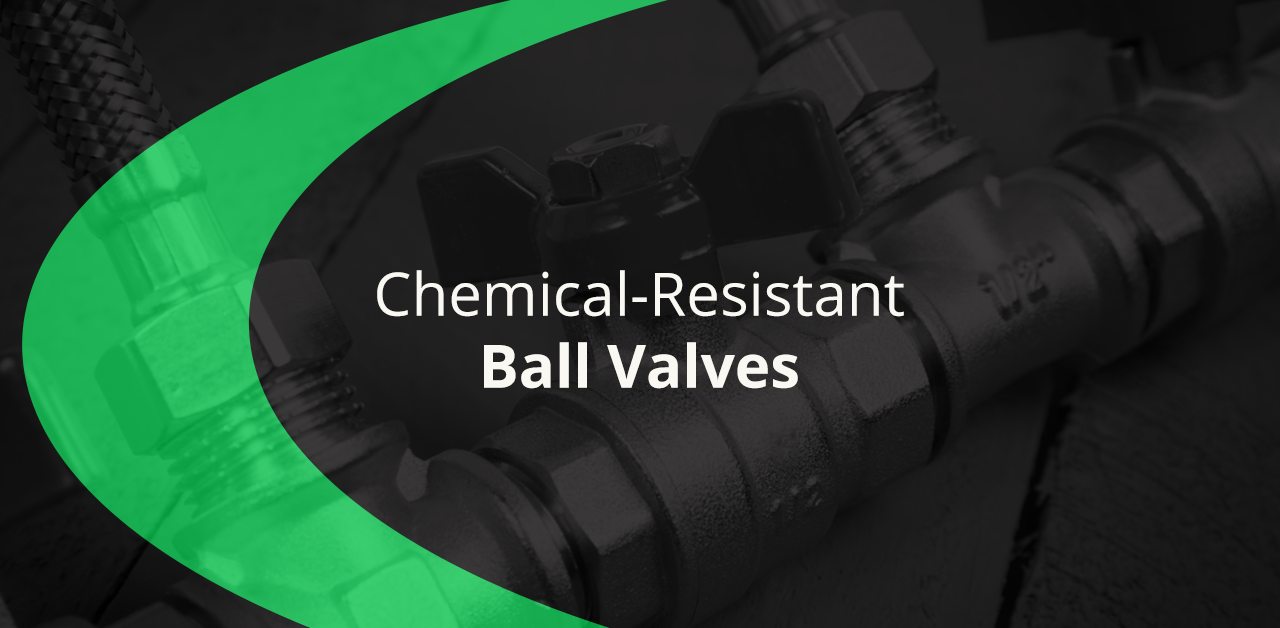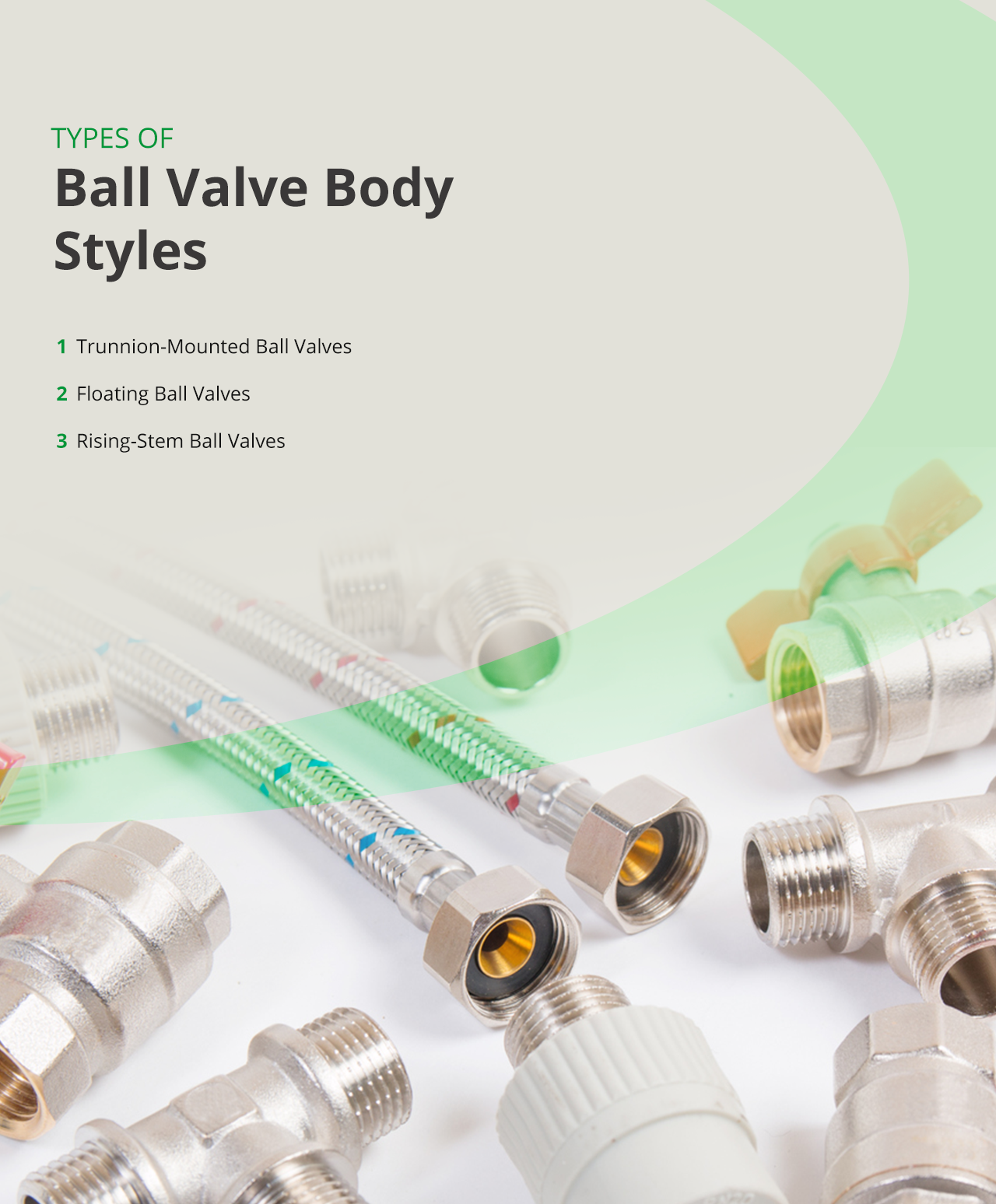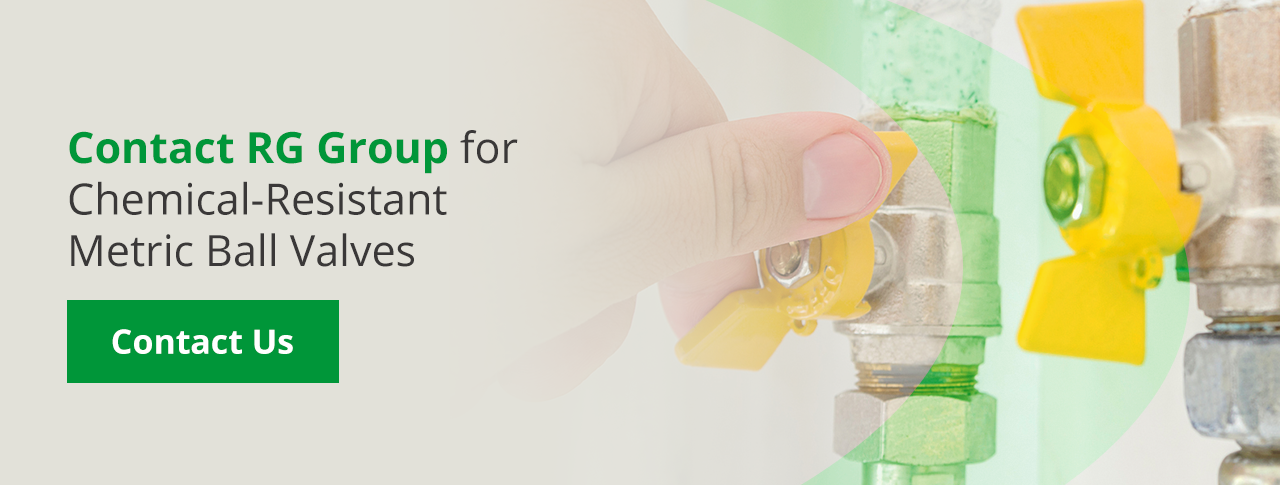
Ball valves may be small, but they are critical components in many industrial applications. Because ball valves control the flow of fluids, they see extensive use across just about every industry. It’s important to know how to tell which industrial ball valves are best for different applications, especially those involving hazardous chemicals, which can easily destroy some types of valves.
Corrosion poses serious financial risks to any industry, as well as obvious structural risks. According to the National Association of Corrosion Engineers and the U.S. Federal Highway Administration, the total annual cost of corrosion in the United States across all industries is approximately $276 billion, or about 3% of the United States’ GDP. Your company can reduce your risk of financial loss from corrosion, though, by using chemical-resistant ball valves.
At RG Group, our Parker ball valves offer heavy-duty durability to fight against chemical corrosion. The premium quality and reliability of this brand of ball valve make it stand out from the rest. Our Parker valves function reliably in temperatures ranging from 0 to 360 degrees Fahrenheit, and they can withstand pressures of up to 6,000 psi. They come in a variety of styles, materials and diameters optimized for different industries and applications.
The wide variety of valve types on the market means finding the right ball valve can be tricky. Fortunately, we’ve put together this handy ball valve buying guide. Below, we’ll explain the benefits of chemical-resistant ball valves and help you figure out how to choose the ball valve that’s right for your application.
Types of Ball Valve Body Styles
Ball valves come in a few different styles:

1. Trunnion-Mounted Ball Valves
Trunnion-mounted ball valves contain a pivoting point where a shaft rotates inside part of a cylinder. This construction allows for shutoff and switching through the use of upper and lower bearings. The additional top-and-bottom anchoring of trunnion-style valves also keeps the ball from floating in the fluid. This construction allows for larger valves that function at peak performance in high-pressure operations and with higher flow capacity because the ball has more support, which reduces the friction against it.
RG Group’s trunnion-mounted ball valves can withstand pressures of up to 10,000 psi and provide dependable switching and shutoff capabilities. The design of the upper and lower bearing in these high-pressure ball valves helps provide seizure resistance and extend the valve’s lifespan, even in rigorous applications.
2. Floating Ball Valves
Floating ball valves are one of the most common types of ball valves. Their free-floating ball design allows for strong performance even under challenging pressure and temperature conditions. Unlike the balls in trunnion-mounted valves, the balls in floating ball valves are attached only to the valve stem. The advantage of this construction is that the ball can float in the liquid and press against the seat of the valve, creating a positive seal. A positive seal is useful because it allows for zero leakage from the valve, an essential quality in many gas operations, among others.
These ball valves are designed for process and instrumentation applications and can streamline fluid flow to enhance those operations. They offer rapid on-off control and can withstand pressures of up to 6,000 psi and temperatures of up to 450 degrees Fahrenheit.
These valves are useful in facilities such as chemical plants, refineries, power plants and petrochemical plants. They provide a range of functionalities, including flow diversion and flow selection, and are often critical parts of quick-fill systems, process-mixing systems, instrument panels and remote shutoff with actuation. They are also typically less expensive than trunnion designs.
RG Group’s floating ball valves are generally available in stainless steel and brass, with specific alloys available upon request. The ball bearings feature microfinishes for a positive seal, and the valves allow for a straight flow path that reduces pressure drop. Our products also offer optional features such as pneumatic and electric actuation, live-loaded PTFE stem seals, nonadjustable O-ring stem seals, upstream and downstream drain models and stainless steel and extended handles.
3. Rising-Stem Ball Valves
Rising-stem ball valves contain a stem that allows the ball to tilt within the valve. When the valve is closed, the ball nestles snugly against the seat – the disc-shaped material designed to provide a watertight seal. When the valve is open, the ball moves away from the seat, allowing liquid to flow around it. This capacity for repositioning prevents the ball from rubbing against the seat and causing the valve to fail. It decreases wear and minimizes the need for maintenance.
Ball Valve Port Styles
In addition to their different body types, ball valves also come with different port configurations. The ball of a ball valve typically contains a port, or a bored opening, through its center. When the bore is aligned with the valve body, liquid can flow through. When the valve is rotated 90 degrees and the bore is perpendicular to the valve body, liquid can no longer pass through. These ports are designed in different ways for optimization in a variety of applications.
1. Full-Port Ball Valves
A full-bore ball valve has a sizeable ball with a large bore diameter—often the same size as the valve pipe itself. This large orifice allows for a higher flow of liquid, thus reducing friction and pressure loss. The large bore diameter is also ideal for valves that may clog and require pigging to remove the blocked material.
2. Reduced-Port Ball Valves
Reduced-port ball valves have smaller ports to restrict the flow of liquid within a narrower path. These valves are typically smaller and less expensive, and they are useful in applications where pressure loss is a minimal concern.
3. V-Port Ball Valves
In a V-port ball valve, either the ball or the seat of the ball contains a V shape. The advantage of the V shape is that it allows the valve to open and close more easily. When the valve is closed, the smaller, V-shaped end typically opens first, allowing for greater stability and control of liquids’ velocities. For this reason, V-port ball valves often function as control valves, especially in industries such as the paper, chemical and power industries. However, because they require more stability to function, these valves are not suitable for use in all applications.
Ball Valve Body Materials

Ball valve bodies come in a few different types of materials. The three most popular materials we offer at RG Group are brass, carbon steel and stainless steel, but many other possibilities exist as well.
1. Brass and Chrome-Plated Brass
Brass ball valves offer the virtue of reliable performance at an economical price. They typically feature a brass body with a chrome-plated brass ball, and they provide superior corrosion resistance over plastic valves while remaining feasible for most budgets. Our brass ball valves offer long-lasting operation and come with a variety of options to suit different applications. In addition to being corrosion-resistant, they are heat-resistant as well. They function well at temperatures ranging from -50 degrees Fahrenheit up to 450 degrees Fahrenheit.
Unlike other types of ball valves made of materials such as bronze, brass ball valves contain very little lead, so they are safer for use in applications where lead contamination is a concern.
Brass is also a key component of Parker brass compression fittings. These utilize a brass compression piece to compact around the pipe and hold the valve securely in place.
2. Carbon Steel
Carbon steel ball valves are exceptionally rugged and durable. They typically consist of carbon steel bodies with steel balls, and they are designed for demanding applications in which valves must stand up over time to harsh working conditions. They are often used in heavy-duty truck manufacture and agricultural, construction and industrial applications.
Carbon steel ball valves are useful for fuel line shutoffs in gasoline- and diesel-powered equipment and are also common features of hydraulic lines and in plant design plumbing that requires complete shutoff capability. They can function effectively in temperatures ranging from -20 degrees Fahrenheit to 425 degrees Fahrenheit.
3. Stainless Steel
Stainless steel ball valves are well suited for all-purpose industrial use because of their excellent chemical resistance. They provide the best corrosion resistance of any of the ball valves we offer. They can stand up to the harshest chemical conditions and are particularly recommended for use in marine environments because they resist the corroding effects of saltwater as well.
Stainless steel ball valves are often used in industries such as petrochemical, steel, agricultural and food processing. They are also common components of fuel lines, chemical lines, washdowns and plant plumbing that requires complete shutoff capability.
4. Bronze
Bronze ball valves are resistant to cracking because of the high malleability and ductility of bronze. Bronze ball valves also resist corrosion very well and are relatively inexpensive, providing beneficial cost savings to many industries when compared to valves made of materials like brass. They are often used for direction control, flow shutoff and a variety of other functions.
5. Chrome
Chrome is useful for making ball valves because it provides strong resistance against wear over time. It also helps the ball move smoothly as the valve opens and closes and allows for excellent corrosion resistance. Chrome is more porous than many other materials, though, so if a chrome valve contains chrome plating over another metal, the porous nature of the chrome can sometimes allow water to seep through and corrode the underlying ball structure.
Many ball valves have a protective coating made of materials like chrome. A chrome coating can make a ball valve as hard and resistant as stainless steel. It is susceptible to corrosion by seawater and chlorine, however.
6. Titanium
Titanium provides a high level of corrosion resistance and abrasion resistance for ball valves. It is an ideal material for ball valves that will be used in high-pressure acid leaching (HPAL) scenarios, which make use of highly corrosive acids, often 98% sulfuric acid. Titanium ball valves are also ideal in pressure oxidation (POX) applications, such as in autoclave plants for steam sterilization. They are optimal for use in plant maintenance and emergency shutdown applications.
7. Nylon
Nylon valves are common across a range of industries. They are inexpensive to produce and have good chemical and mechanical qualities.
One of the nylon-bodied ball valves RG Group offers is the mini ball valve. The nylon construction of this ball valve makes it lightweight and ideal for use in compact operations and where quick installation times are a priority. These valves offer full flow capacity and stable performance. They are often used in pneumatic applications, as well as in factory and process automation, packaging, petrochemical facilities, semiconductors, machine tools, robotics, vacuum lines and textile operations.
8. PVC
Plastic ball valves like PVC valves are useful because of their high corrosion resistance. Because they are plastic rather than metal, they provide superior resistance to rust and corrosion, and they are also more inexpensive to manufacture than many metal ball valves. Because of their light weight, they are also economical to ship. They are not suitable for certain demanding industries because they cannot stand up to the same temperatures and pressures that metal valves can. But in many applications, such as in swimming pools or irrigation systems, they make an excellent cost-effective alternative to metal valves.
9. Polypropylene
Polypropylene ball valves, also made from plastic polymers instead of metal, provide extreme resistance against harsh chemicals and corroding agents. These ball valves are ideal for applications such as water filtration units, coffeemakers, cold beverage machines and other applications whose parts need to stay in pristine condition.
Chemical Resistance of Ball Valve Seals

The seal is one of the most important ball valve components. The seal forms a tight connection between the ball and the seat material to prevent liquids from passing through when the valve is closed. The right seal can make an enormous difference in functionality, maintenance time and costs.
Common ball valve seal materials include the following:
- EPDM: EPDM rubber is a type of synthetic rubber made of ethylene, propene and a diene monomer. It is one of the best-performing types of seal materials and provides a particularly effective seal in hot water and steam. It is also optimal for use with alcohols, low concentrations of acids and alkaline substances and more. It has limited resistance to grease, oils and solvents, however.
- FKM: FKM is a fluoroelastomer that provides more heat and chemical resistance than most rubbers. It offers resistance to a broad spectrum of chemicals and is also resistant to many oils. It does not perform as well with hot water and steam, though, because it tends to expand at high temperatures.
- PTFE: PTFE — commonly known as Teflon — is hard and rigid, unlike EPDM and FKM. It is resistant to many chemicals, though, and its hardness allows it to withstand extreme temperatures and pressures.
- NBR: NBR is nitrile rubber. It provides strong resistance to compression and wear, and it stands up well to alcohols, oils and nonpolar solvents. It is sensitive to fluctuations in weather and temperature, though.
Ball Valve Applications
Ball valves find uses in a number of different industries and applications, from gas processing and oil refining to fuel lines, flowing systems on ships and many more. The rugged performance of chemical-resistant ball valves makes them incredibly well suited to demanding manufacturing and industrial environments.
Industries that involve hazardous chemicals need the right kind of valves to ensure that their processes run efficiently and effectively. Chemical-resistant valves have the durable construction to withstand harsh, hazardous substances and keep performance high and maintenance requirements minimal.
Contact RG Group for Chemical-Resistant Metric Ball Valves
In any industry, it’s important to choose the right ball valves, and it’s also important to have the facts you need to make an informed decision. The consequences of choosing the wrong ball valves can have a dramatic impact on your business, so it’s always best to get the decision right the first time.
Partner with RG Group for the best motion control and fluid handling solutions and quality products. We can help you figure out how to find the right ball valve for your specific application. And the technical expertise of our engineers means we can answer your questions about choosing chemical-resistant ball valves and give you the highly functional and long-lasting products you need.
Contact us today to learn more.






